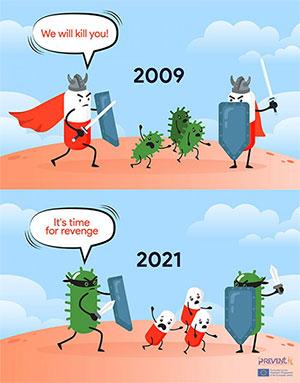Antibiotic Resistance (ABR)
Antibiotic resistance (ABR) is rising to dangerous levels in all parts of the world. New resistance mechanisms are emerging and spreading globally, thus threatening our ability to treat common infectious diseases. Yearly, 700,000 people lose the battle to antibiotic resistance, and another 10 million are projected to die from it by 2050. ABR alone is killing more people than cancer and road traffic accidents combined together. Economic projections suggest that by 2050, ABR would decrease gross domestic product (GDP) by 2-3.5 per cent, with a fall in livestock by 3-8 per cent, costing USD100 trillion to the world. Without urgent prevention and risk management actions, we are heading for a post-antibiotic era, in which common infections and minor injuries would kill.
This antibiotic-resistance crisis is mainly attributed to the expanded utilization and misuse of medications – including the overuse of antibiotics in livestock and farming production – overpopulation, upgraded worldwide relocation, poor sanitation, poor sewerage transfer framework, improper disposal methods of antibiotics – which degrades the environment – as well as a lack of new drug development by the pharmaceutical industry.





